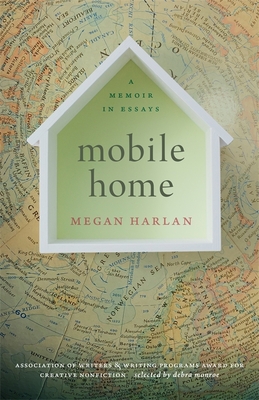Review by Melissa Oliveira
 Several years ago, I attended a writing event featuring a filmmaker who was very keen on the idea that there’s only one basic plot in all of storytelling. At its core, he insisted, every great story is really only about one thing: going home again. Granted, his examples were pretty literal (ET, The Wizard of Oz), and he pressed the point hard, but I find myself revisiting that talk in my mind lately. Maybe being an ocean away from family for the duration of the pandemic has caused me to fixate on this idea of home and the questions it raises: is home where you grew up or where you live now, the hometown or current town? Is it a specific dwelling or a broader geography, a group of loved ones or a language? Is home the place you go back to visit, or is it the people who live there?
Several years ago, I attended a writing event featuring a filmmaker who was very keen on the idea that there’s only one basic plot in all of storytelling. At its core, he insisted, every great story is really only about one thing: going home again. Granted, his examples were pretty literal (ET, The Wizard of Oz), and he pressed the point hard, but I find myself revisiting that talk in my mind lately. Maybe being an ocean away from family for the duration of the pandemic has caused me to fixate on this idea of home and the questions it raises: is home where you grew up or where you live now, the hometown or current town? Is it a specific dwelling or a broader geography, a group of loved ones or a language? Is home the place you go back to visit, or is it the people who live there?
Megan Harlan’s wonderful recent book, Mobile Home: A Memoir in Essays (University of Georgia Press, 2020) excavates all the layers of what home is from the perspective of someone whose childhood home was never one place in particular, but rather many different places scattered across the globe.
“Growing up,” Harlan writes, “I moved on average once a year, lived in seventeen homes across four continents — very particular corners of North America, Asia, Europe, and South America — by the time I graduated from high school at age seventeen.” Indeed, as the daughter of American expats following work at large-scale engineering projects, Harlan’s childhood home is independent of any single geography or structure. As a girl, her experience even seems to stand out among fellow kids of expats, since many of them can point on a map to a place they come from, a home they long for. For Harlan, though, the quest of going home again could just as easily lead to a motel beside a California Denny’s as it could to a double-wide trailer home in the Saudi desert or a fancy hotel in London.
Yet throughout the essays included here, Harlan goes to all these homes again to explore the tension between being settled and movement or, as she puts it, “place vs space.” Harlan keeps digging for meaning, motivated partly by her wish to make a good home now for her young son: “How to sculpt from rootlessness an identifiable, meaningful universe?” she asks. “Or, put more unnervingly, how do we attach meaning to constant change?” Each essay tries to puzzle through this question in different ways, pushing straight past “home is where the heart is” clichés to get at the deeper stuff gleaned from a nomadic childhood, wondering if some lessons can serve in her current, more settled life.
“A History of Nomadism,” for example, talks about the Bedouin nomads whose tents she lived near in the Saudi desert, and the meaning they find in their own traveling culture. In “Mobile Home,” it’s art that provides meaning for her family: the boxes of books and music they brought with them, unpacking them in each new locale and packing them up again. “Spider Season” was one of my favorites; here, a memory of a childhood brown recluse whirls into a discussion not only of her son’s pillow forts, but also about spiderwebs, those small homes inside her own which are light and flexible and also made of some of the strongest stuff on earth.
In “Likelers,” another favorite, Harlan also explores the experience of living in a California midcentury suburban house which, she writes, “I’d come to view as a trap for my family, where none of us felt at home.” Throughout the collection, the essays in Mobile Home seem to suggest that the world abounds with an amazing diversity in making and moving homes and ascribing meaning. The attempt at a sedentary, suburban American ideal not only overlooks that reality, but perhaps also explains the unhappiness that crept into her family’s life in that California house: both her mother’s sadness and the growing awareness of her father’s deadly alcoholism (a topic she circles back to again in the devastating “Dadaholic”).
The essays in Mobile Home are lyrical and big-hearted and thoughtful in how they deal with family, both the ones we come from and the ones we try to build later. When I picked up this book, I expected travel essays that would probably be more the concern of the globetrotting parents, but I ended up savoring the extended meditation on home. Harlan’s more nuanced take has much in common with essays by Jo Ann Beard, Annie Dillard or Maggie Nelson: inventive structure, detailed imagery, and a voice that dips through layers of archaeology, history and architecture, deepening each essay’s resonance. “Look closely,” she writes, “and a place toggles across time, all its presents and pasts. A place contains its strata of change, captured in situ, made seemingly solid. But it is barely more solid than its future.”
Much like Harlan’s childhood, the pieces here don’t conform rigidly to any preconceived structure, and I’m not sure if we ever do end up home again with these essays. Often, instead, I found we wound up in deeper, more surprising places, and Mobile Home: A Memoir in Essays might be one of my favorite nonfiction books I’ve read this year.

Melissa Oliveira
ReviewerMelissa Oliveira’s writing has appeared or is forthcoming in Ploughshares Solos, Agni, Pleiades, Calyx and others. Her previous work has garnered a Best American Essays Notable listing, a Best of the Net nomination and an honorable mention from Glimmer Train Stories. Her reviews have appeared in The Kenyon Review Online, Brevity, The Rumpus and more. Melissa currently lives in Berlin, Germany, where she is working on a novel-in-stories about the divided city.



1 comment for “REVIEW: Mobile Home: A Memoir in Essays by Megan Harlan”